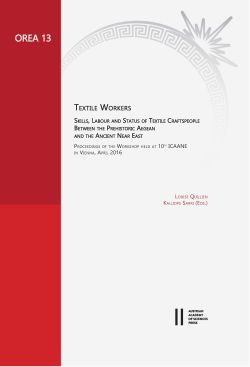
Textile Workers. Skills, Labour and Status of Textile Craftspeople Between the Prehistoric Aegean and the Ancient Near East, pp. 59-72, 2020/04/30
Proceedings of the Workshop held at 10th ICAANE in Vienna, April 2016
How can we understand the people behind the artefacts we find – in our case a tunic dated to 400–600 CE and found in a salt mine in Chehrābād, northern Iran? Applying the concepts of chaîne opératoire, we tried to search for the people involved in making the tunic as well as those who used and discarded it. This multi-approach investigation is supported by different analytical tools such as fibre analysis with a Scanning Electron Microscope, analysis of the tailoring patterns as well as use-wear analysis. The tunic was made of a cotton tabby fabric and tailored in a sophisticated way. As the fabric of the base web is a little irregular and some weaving faults were detected, we tend to assume that the maker of the fabric and the tailor were not the same person. It is also unclear how many users the garment had before it was discarded and left at a salt mine as a rag. Traces of greasy tissue and pilling on the inner side of the tunic show hints of hard physical work, i.e. the garment had been worn during hard labour.
Keywords: Chehrābād salt mine; complete tunic; Sassanian period; spinning; weaving; tailoring; object biography